What is Shopping Cart Abandonment? The terms Abandoned Cart and Cart Abandonment Rate are often used in E-Commerce.
The Abandoned Cart occurs when a user, a customer of an online store, leaves the store before performing an action that is desirable from the store's standpoint.
In other words, a customer who abandons the shopping cart is a customer who has added products to it but has not bought them. They abandoned the purchase.
There can be many reasons for abandoning a purchase or interrupting the process at any stage. Customers change their minds, find a better deal, have all sorts of problems during the purchase, or get distracted.
Of course, each customer, each Abandoned Cart, is a separate story and set of reasons. But not so unusual that we can't see the similarities. It is possible to identify and define similar reasons and combine them into categories.
In this article, we will look at the most popular ones. We invite you to read on!
How is Abandoning a Checkout different from Abandoning a Cart?
For the sake of clarity, we need to make an important distinction. Abandoning a Checkout is not synonymous with Abandoning a Cart. These are two separate (although with many similarities) situations.
They have similar causes, but they are not the same thing. It is better to say that they are the obverse and reverse of the situation in which an online store customer abandons a purchase.

The moment of resignation is crucial here.
Abandoning a Checkout is a withdrawal from a transaction that has already been initiated.
The product was selected and added to the shopping cart, and the customer intended to pay for it but, for various reasons, did not do so. The payment process, for some reason, turned out to be inconvenient, unreliable, unavailable, or impossible.
The Cart Abandonment occurs slightly before the customer initiates the payment process.
Why? The most "illogical" reason may be the answer. Customers often don't even want to buy anything at all. And here we reach the clue.
The intention of the online customer is crucial. We can distinguish:
- A committed customer who is looking for a product because they want to buy it
- A potential customer who is looking for a product because they want to learn more about it
- A user of the store who is looking for entertainment.
Generally speaking, Abandonment of the Checkout does not always mean that there is a problem with the:
- High costs
- Complicated payment process
- Long delivery time.
Often its cause is something more fundamental.
Abandoning the Shopping Cart is motivated by different intentions, goals, needs, and actions than purchasing.
Summary: Abandoning the Checkout and Abandoning the Shopping Cart are two different situations, different moments, and stages of the path to purchase. These are two different states, behaviors, thoughts, emotions, beliefs, and impressions.
For the sake of clarity, in this article, we will only discuss the phenomenon of Abandoned Shopping Carts.
How to calculate the Cart Abandonment Rate?
An Abandoned Shopping Cart is, of course, a big problem for the store because abandoning a purchase always means a bigger or smaller problem with the following:
- Broadly understood attractiveness and competitiveness of the offer (such as product price, method, place of delivery, and delivery costs)
- Buying process
- Efficiency, friendliness, and length of the path to purchase
- Functionalities (their scope – their number and adequacy, the way they work)
- User experience in an online store (E-Commerce User Experience).
Monitoring and analyzing the number of Abandoned Carts is a necessary and integral activity for optimization in E-Commerce.
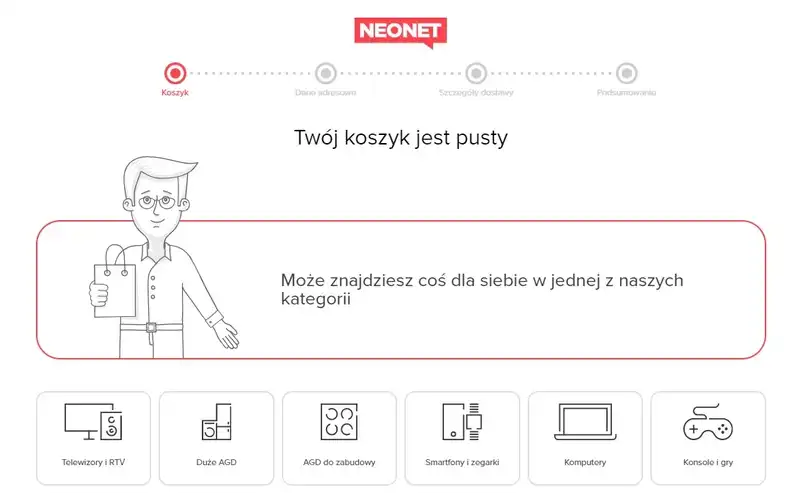
The Cart Abandonment Rate is the most popular measure of a store's sales effectiveness. It is calculated in a very simple way.
The Cart Abandonment Rate is the product of completed transactions and the total number of transactions multiplied by 100.
According to Baymard Institute research (and averages of third-party research), presented in the article "44 Cart Abandonment Rate Statistics," as many as 69% of all online store users Abandon their Shopping Carts.
The phenomenon of Abandoned Shopping Carts is:
- Constant (it is and will be as old as E-Commerce/M-Commerce itself)
- Widespread (occurs in stores operating in all markets, in all countries, in all channels)
- Typical for E-Commerce and M-Commerce (in stationary stores, it appears incidentally and is an insignificant margin)
- Has its own dynamics, logic, and seasonal fluctuations
- Has its own peculiarities and characteristics (e.g., repeated behavior on special days for E-Commerce, such as Black Friday or Cyber Monday)
- Possible to improve but impossible to eliminate completely
- Determined by – in large part already identified – causes.
The Cart Abandonment Rate is a tool that allows us to measure the percentage of users who didn't make a purchase and to determine the reasons for Cart Abandonment (or, more precisely, to formulate strong hypotheses about the causes). What conclusions can be drawn from these results?
In the subject literature, we can find many research results, test results, discussions of typical causes of Shopping Cart Abandonment, and methods of combating it.
The problem of Abandoned Shopping Carts is quite well-known. From both the theoretical and practical sides. From the research side, as well as from the design side.
Of course, each sector (e.g., B2B, B2C), each industry, each market, each E-Commerce platform, and each online store has its characteristics, which are essential variables that differentiate and determine the reasons for Shopping Cart Abandonment.
However, generally speaking, E-Commerce customers are most likely to abandon further purchases and not move on to payment because of the following:
- Lack of the need to purchase – their goal from the beginning was not to buy but to get acquainted with the offer.
- Shipping problems (cost, time, mode of transport, transport service).
- Using the online store for a different purpose from the "natural" – users do not visit the store to buy something but to experience something, to counteract boredom.
- A limited number of payment methods – often communicated through a banner with logos of individual systems and/or banks.
- Technical problems.
- A long and complicated purchasing process.
- Circumstances and impact of context during the purchase.
- Information deficit.
Of course, the above list is far from complete and by no means exhausts the subject or the problem. Instead, it is a shortened, illustrative form indicating the leading, most common "culprits."
We will discuss each reason in more detail later in this article. So don't lose hope. You will find out everything soon enough :) In the meantime, let's return to our Cart Abandonment Rate and ask ourselves – what does it offer?
By utilizing the Cart Abandonment Rate, we can see how much our store is:
- Convenient and seamless to use
- Attractive, in terms of offer and functionality
- On which days, periods, and moments abandonment occurs.
By identifying the causes, we can find effective and adequate remedies. But you can read about them in this article – Recovering the Abandoned Shopping Cart.
When do we most often abandon E-Commerce Shopping Carts?
The article "Seven Fascinating Stats on Ecommerce and Cart Abandonment" provides very interesting data on trends that can be discovered and observed related to the Abandoned Cart phenomenon. The authors, relying on their statistical data, identified several of them.
According to their findings:
- Users often Abandon Shopping Carts on Tuesdays, but on Saturdays, they do so significantly less compared to the other days of the week.
- Stores can expect the highest number of abandonments in pre-holiday periods and on days of special events (such as Black Friday).
- The worst months in terms of the Cart Abandonment Rate are January, November, and December.
- Most Shopping Cart Abandonments occur between 6 p.m. and 10 p.m.
- Young people are most likely to abandon the cart, namely those between 18 and 35 years of age.
- Women Abandon Carts more often than men.
From various other research, we can generally conclude that:
- E-Commerce customers tend to treat shopping carts as shopping lists and are eager to return to them and finalize the purchase after a certain period.
- The scale of Cart Abandonment for different product categories and industries is very similar.
- Abandonment of the shopping cart is not influenced by the reason for the purchase (occasional purchase, impulse purchase, or resulting from a necessity).
- Customers expect products added to the shopping cart to be kept there until they remove them themselves.
- Reminders of an unfinished purchase are received negatively.
- E-Commerce users have very similar expectations and are driven by similar goals, and their behavior is also far from unique.
What is most often found in Abandoned Shopping Carts?
If we take a look at Abandoned Shopping Carts, we can find in them the following:
- Clothes and underwear
- Sportswear
- Electronic equipment
- Books.
At least, that's according to research conducted by Barclaycard, discussed in the article "Retailers losing out on £18bn each year through 'Surf and Turf' online shopping trend."
Alright, so what are the most common reasons for Cart Abandonment?
Abandoned Shopping Cart – A cascade of surprising costs
Regularly updated Baymard Institute research leaves no doubt.
The results described in the article "Reasons for Cart Abandonment - Why 68% of Users Abandon Their Cart (2021)," once again confirmed that additional costs (delivery, packaging, taxes), if not known in advance, are a big problem for E-Commerce customers.

As customers of online stores, we don't like to be surprised by changes in costs.
We don't like it when a store provides costs at the very end of the process or, like Alfred Hitchcock, keeps up the suspense and gives it to us in the following steps, stages of the purchasing process.
For many years, the undisputed reason for abandonment has been the additional costs. It is worth remembering that shipping costs and additional fees are important information and significantly impact the purchase decision.
They can effectively encourage and even more effectively discourage people from proceeding to checkout. The impact of this factor on the purchasing process is crucial.
Hiding full costs and dosing this information creates distrust in E-Commerce customers and breeds unnecessary caution distancing the customer from the store and the buying process.
It's perceived as insincere. The image the store builds is just as important as the technical, functional, and product offering issues.
Credibility, trust, and secure payment
Abandoning the Checkout is not Abandoning the Cart. We already know this. Shopping Cart Abandonment often has its cause in the offered payment methods, which the customer learns about before they start the payment process.
The security of payments is not just a technical issue but is primarily a matter of experience.
Experience in making payments through the Internet.
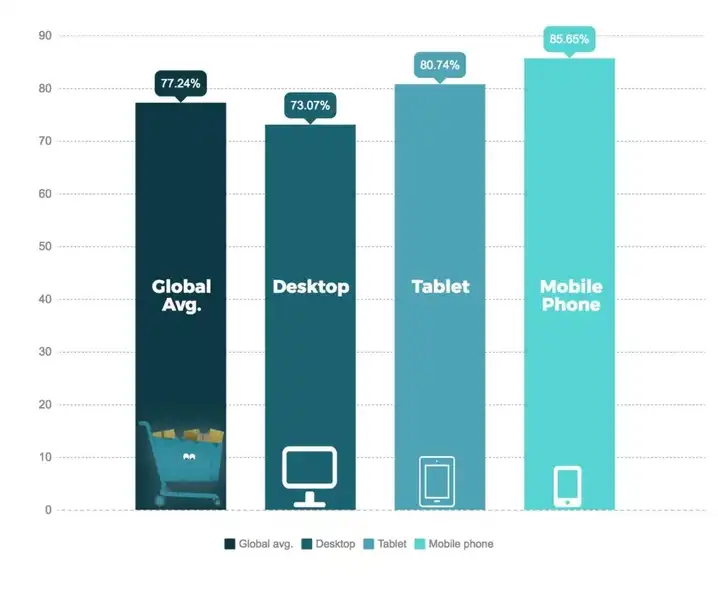
Experience in handling interfaces and understanding the processes of the various systems or payment types (e.g., credit card payment, transfer payment, payment through a third-party provider, and directly through the parent bank).
How data is entered, shared, and stored gives rise to various attitudes, beliefs, expectations, and perceptions.
Caution, distrust, and intense emotions are a mix that can instantly influence the decision to abandon the shopping cart.
Credibility, in this dimension, can be improved by offering a wide range of payment options.
Overly limited payment methods, particularly if they involve unfamiliar options or are perceived as unattractive or inconvenient, also impact whether the customer will abandon the shopping cart or be willing to proceed to checkout.
Tediously Abandoned Shopping Carts or orders with no end
One of the biggest advantages of a modern online store is speed, understood very broadly, from the loading speed of individual pages to the speed of the purchase process and the path to purchase.
Online shopping today must be fast and convenient. Especially if it’s done in guest mode and involves a lot of data entry into fields on forms.
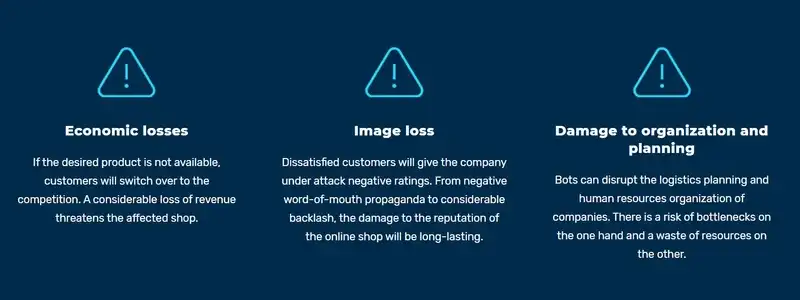
The number of fields, how they are validated, error tolerance, forcing account registration, confirming data, and several other practices all contribute to the E-Commerce customer experience.
Negative customer, user experience (CX, UX) is a crucial reason for Shopping Cart Abandonment in E-Commerce.
The more time-consuming the process, the higher the interaction costs, and the greater chance that the store will be perceived as unfriendly.
According to Baymard Institute researchers and their article "The Average Checkout Flow Has 14.88 Form Fields - Twice as Many as Necessary," among the riskiest practices and reasons for Cart Abandonment are:
- Additional costs that are revealed in subsequent stages of the purchasing process
- Forcing the creation of an account
- Overly long delivery time
- Too long, complicated purchase process.
It's worth keeping in mind that forced registration will always be met with resistance, especially since it interrupts the buying process, slows down the achievement of the goal, impairs the sense of fluidity, and is a frequent cause of errors, which are always problematic and frustrating.
Errors, technical problems, and long loading time of the online store page
Errors in forms (made by customers but also due to the malfunctioning of the server or Internet infrastructure) are often the reason for Cart Abandonment.
Fluctuating connection speed (the speed and stability of Internet access are fundamental for M-Commerce) can be as significant a reason for abandoning a purchase as high delivery costs. If high costs are disappointing, technical problems are frustrating.
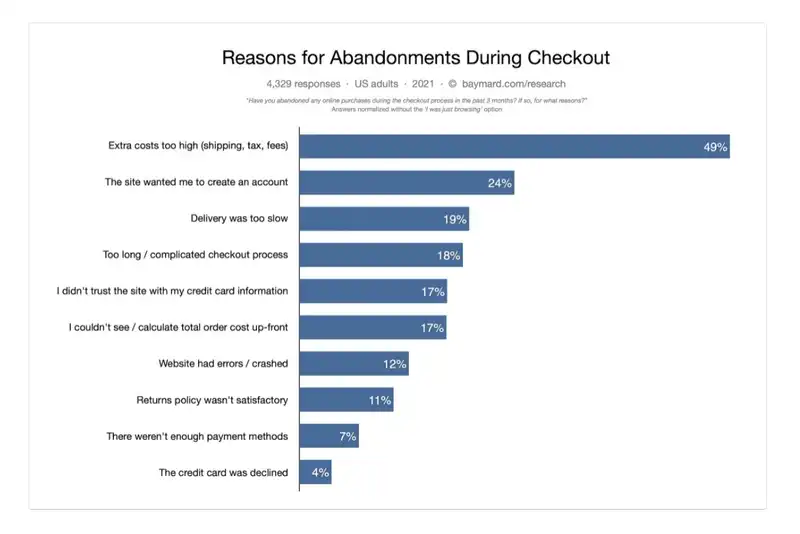
It is worth remembering that the speed and proper operation of the site have a massive impact on the evaluation of its credibility and the level of trust it inspires.
The technical reliability and accessibility of the online store's website – the impression it creates – is automatically and unconsciously extrapolated into a general idea of how the store works.
We automatically imagine the operational, logistical, organizational, legal, or service quality aspect as equally slow, unfriendly, and unreliable.
Distractors, the influence of context and device, and information deficit
The impact of the context in which purchases are made, the stimuli that affect the customer, and the impact of the device (and thus the type of app the customer is using) receive far too little attention.
The customer experience in E-Commerce and M-Commerce differs significantly, including the reasons for Cart Abandonment.
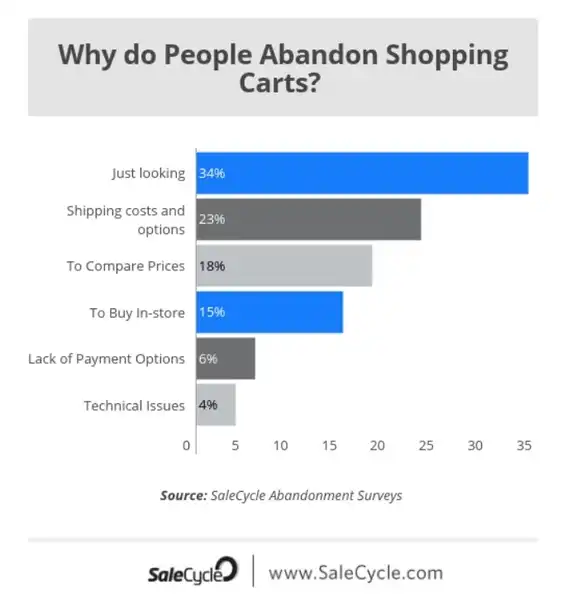
Distractors, stimuli that affect the level of attention and the ability to concentrate, significantly impact successful shopping, especially if it's done in the mobile channel.
The peculiarities of the mobile channel, its task orientation, and the greater significance of micro-moments and micro-interactions all impact the issue of abandoning purchases.
We should also remember that the purchasing process itself has become much more complicated.
Customers often browse the store's offer on a mobile device and finalize the purchase on a computer.
They look at products in a stationary store to buy them in an online store.
Or, on the contrary, they look at them online and eventually buy them at the nearest stationary store. Browsing often means adding a product to a shopping cart or the increasingly popular wishlists.
Context is particularly important in M-Commerce. The changing location, the physical limitations of the screen, and the impact of rapidly changing external stimuli can and often cause Cart Abandonment.
The accessibility, comprehensibility, completeness, and clarity of the information offered about the product, its attributes, the offer, and its characteristics also affect E-Commerce and M-Commerce customers. Crucial information (such as cost, time, and method of delivery), as we have already said, plays an important role. They encourage or discourage E-Commerce customers from making a purchase.
However, equally important is the ability to quickly and seamlessly learn about the product's specifications to compare it in crucial aspects with an equivalent product.
Adequate product presentation (photographs, animations, videos, documentation, opinions of customers, experts, and leaders) proves the store's commitment and openness to customers' needs.
Customers' needs also include the possibility of talking to the staff, which entails:
- Wide time range
- Competencies of service department employees
- Types of service (automated, using AI technology, traditional, allowing users to contact a consultant, synchronous, allowing them to get a response directly, asynchronous, delaying response)
- Communication channels.
The lack of easy and quick access to the customer service department
Information and the ability to obtain it instantly is a valuable but all too rare advantage of online stores.
The ability to get critical, comprehensive, dilemma-solving information without leaving the store's website is counteracting the Abandoned Cart phenomenon.
It is worth remembering that the ability to make a purchase 24 hours a day, 7 days a week, 365 days a year simultaneously creates a necessity to offer any necessary information in this timeframe.

| Source: X-kom.pl
Uninformed customers are usually customers that are:
- Uncertain
- Unconvinced and full of dilemmas
- Frustrated
- More determined to Abandon the Cart and find information in other sources.
The problem of the availability of answers to burning questions in an unlimited timeframe can be solved by all kinds of chatbots, virtual assistants, or detailed, elaborate F.A.Q. Pages.
Abandoned Shopping Carts during the pandemic
In the trade press, we can read about a new phenomenon. The CNBC website published a fascinating article, "Young people have a popular pandemic pastime: Filling, then abandoning, e-commerce shopping carts," which describes a new trend that has emerged in E-Commerce with the Covid-19 virus outbreak.
An unexpected effect of the lockdowns was the rise of Abandoned Carts.
In particular, the trend is evident among the young (25-34 years old) and very young (18-24 years old) people, who have found a way to cope with the stress, boredom, and constraints of epidemic regimes by visiting online stores.
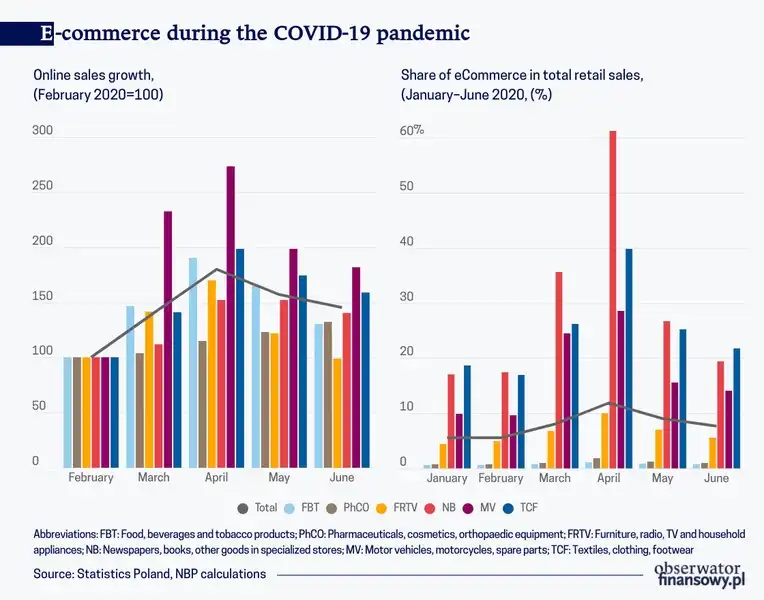
Their goal, however, is not shopping but the need for entertainment. Young people searching for thrills and excitement in the store want to satisfy curiosity but also look for a surprise.
Psychologists explain these behaviors as a desire to find stimuli, to improve the mood. And shopping – whether real or simulated – is ideal for this purpose.
Exploring the offer and opening up to new categories as well as segments is both a problem for the E-Commerce industry and an opportunity. The escapist activities of young people often result in a real purchase. Although it may be postponed, but not excluded.
Common Reasons for Shopping Cart Abandonment in E-Commerce. Summary
- An Abandoned Shopping Cart is a situation in which a potential E-Commerce customer has added products to a store's shopping cart but has not purchased them.
- Abandoning the Checkout is not synonymous with Abandoning the Cart.
- Abandoning the Checkout is a withdrawal from a transaction that has already been initiated.
- Abandonment of the Cart occurs before the initiation of the payment process.
- Abandoning the Checkout doesn't always imply a problem with high costs, a complicated, unattractive payment process, or a long delivery time.
- Abandoning a purchase always means a problem with the attractiveness of the offer, the path to purchase, the offered functionalities, navigation, and – last but not least – the User Experience.
- The Cart Abandonment Rate is the most common measure of a store's sales performance.
- The Cart Abandonment Rate is the product of completed transactions and the total number of transactions multiplied by 100.
- The phenomenon of Abandoned Shopping Carts is constant, common, typical of E-Commerce, and has its own dynamics and logic. It's possible to improve but impossible to eliminate completely.
- The Cart Abandonment Rate allows us to see how trouble-free and attractive the store is to customers.
- Customers often Abandon Carts during pre-holiday periods and on days of special events (such as Cyber Monday).
- The online store's shopping cart is approached differently by different age groups. Younger people are more likely to Abandon the Cart.
- The shopping cart in an online store is often treated as a shopping list.
- The reason for purchase does not affect the desire to Abandon the Cart.
- Hiding full costs creates distrust in E-Commerce customers, breeds unnecessary caution, and distances them from the store and the shopping process.
- Online shopping must be fast and convenient. Especially if it is made in guest mode.
- Negative customer, user experience (CX, UX) is a crucial reason for Shopping Cart Abandonment in E-Commerce.
- The more time-consuming the process, the higher the interaction costs, and the greater chance that the store will be perceived as unfriendly.
- Errors (made by customers but also due to the malfunctioning of the server or Internet infrastructure) are often the reason for Cart Abandonment.
- The impression created by the technical reliability and accessibility of the online store's website is automatically extrapolated into a general idea of how the store works.
- The incorrect operation of a device, the impact of the context, and the application used are also the cause of Shopping Cart Abandonment.
- Crucial, exhaustive, dilemma-solving information should be available to customers seamlessly, as this counteracts the Abandoned Cart phenomenon.
- Shopping carts abandoned in the online store are also the result of lockdowns.
- The reminder for the Abandoned Shopping Cart should be formulated very tactfully.
- The recovery of Abandoned Carts is an activity related to UX optimization.




